Rhythm generally means a "movement marked by the regulated succession of strong and weak elements, or of opposite or different conditions". This general meaning of regular recurrence or pattern in time can apply to a wide variety of cyclical natural phenomena having a periodicity or frequency of anything from microseconds to several seconds ; to several minutes or hours, or, at the most extreme, even over many years.
In music, syncopation is a variety of rhythms played together to make a piece of music, making part or all of a tune or piece of music off-beat. More simply, syncopation is "a disturbance or interruption of the regular flow of rhythm": a "placement of rhythmic stresses or accents where they wouldn't normally occur". It is the correlation of at least two sets of time intervals.
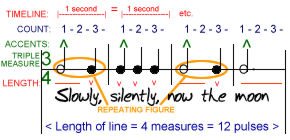
In music, metre or meter refers to regularly recurring patterns and accents such as bars and beats. Unlike rhythm, metric onsets are not necessarily sounded, but are nevertheless implied by the performer and expected by the listener.

Polyrhythm is the simultaneous use of two or more rhythms that are not readily perceived as deriving from one another, or as simple manifestations of the same meter. The rhythmic layers may be the basis of an entire piece of music (cross-rhythm), or a momentary section. Polyrhythms can be distinguished from irrational rhythms, which can occur within the context of a single part; polyrhythms require at least two rhythms to be played concurrently, one of which is typically an irrational rhythm. Concurrently in this context means within the same rhythmic cycle. The underlying pulse, whether explicit or implicit can be considered one of the concurrent rhythms. For example, the son clave is poly-rhythmic because its 3 section suggests a different meter from the pulse of the entire pattern.
In music, an ostinato is a motif or phrase that persistently repeats in the same musical voice, frequently in the same pitch. Well-known ostinato-based pieces include classical compositions such as Ravel's Boléro and the Carol of the Bells, and popular songs such as Donna Summer and Giorgio Moroder's "I Feel Love" (1977), Henry Mancini's theme from Peter Gunn (1959), The Who's "Baba O'Riley" (1971), The Verve's "Bitter Sweet Symphony" (1997), and Flo Rida's "Low" (2007).

In music and music theory, the beat is the basic unit of time, the pulse, of the mensural level. The beat is often defined as the rhythm listeners would tap their toes to when listening to a piece of music, or the numbers a musician counts while performing, though in practice this may be technically incorrect. In popular use, beat can refer to a variety of related concepts, including pulse, tempo, meter, specific rhythms, and groove.
In musical notation, a bar is a segment of music bounded by vertical lines, known as bar lines, usually indicating one of more recurring beats. The length of the bar, measured by the number of note values it contains, is normally indicated by the time signature.
In music, the terms additive and divisive are used to distinguish two types of both rhythm and meter:
Dumbek rhythms are a collection of rhythms that are usually played with hand drums such as the dumbek. These rhythms are various combinations of these three basic sounds:
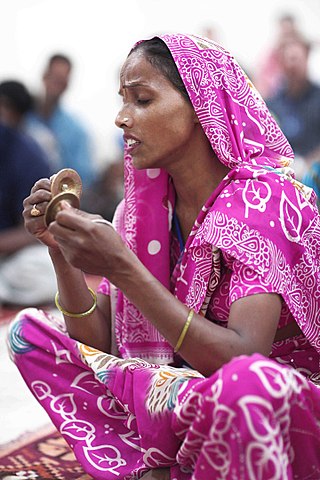
A tala literally means a 'clap, tapping one's hand on one's arm, a musical measure'. It is the term used in Indian classical music similar to musical meter, that is any rhythmic beat or strike that measures musical time. The measure is typically established by hand clapping, waving, touching fingers on thigh or the other hand, verbally, striking of small cymbals, or a percussion instrument in the Indian subcontinental traditions. Along with raga which forms the fabric of a melodic structure, the tala forms the life cycle and thereby constitutes one of the two foundational elements of Indian music.
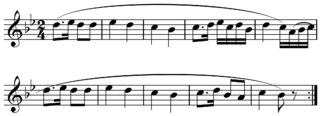
In music theory, a phrase is a unit of musical meter that has a complete musical sense of its own, built from figures, motifs, and cells, and combining to form melodies, periods and larger sections.
A phrase is a substantial musical thought, which ends with a musical punctuation called a cadence. Phrases are created in music through an interaction of melody, harmony, and rhythm.
Ewe music is the music of the Ewe people of Togo, Ghana, and Benin, West Africa. Instrumentation is primarily percussive and rhythmically the music features great metrical complexity. Its highest form is in dance music including a drum orchestra, but there are also work, play, and other songs. Ewe music is featured in A. M. Jones's Studies in African Music.

In music, the term period refers to certain types of recurrence in small-scale formal structure. In twentieth-century music scholarship, the term is usually used as defined by the Oxford Companion to Music: "a period consists of two phrases, antecedent and consequent, each of which begins with the same basic motif." Earlier usage varied somewhat, but usually referred to similar notions of symmetry, recurrence, and closure. The concept of a musical period originates in comparisons between music structure and rhetoric at least as early as the 16th century.
Andalusī nūbah, also transliterated nūba, nūbā, or nouba, or in its classical Arabic form, nawba, nawbah, or nōbah, is a music genre found in the North African Maghrib states of Morocco, Algeria, Tunisia, and Libya but, as the name indicates, it has its origins in Andalusi music. The name replaced the older use of sawt and originated from the musician waiting behind a curtain to be told it was his turn or nawbah by the sattar or curtain man.
Muwashshah is the name for both an Arabic poetic form and a musical genre. The poetic form consists of a multi-lined strophic verse poem written in classical Arabic, usually consisting of five stanzas, alternating with a refrain with a running rhyme. It was customary to open with one or two lines which matched the second part of the poem in rhyme and meter; in North Africa poets ignore the strict rules of Arabic meter while the poets in the East follow them. The musical genre of the same name uses muwaššaḥ texts as lyrics, still in classical Arabic. This tradition can take two forms: the waṣla of the Mashriq and the Arab Andalusi nubah of the western part of the Arab world.
In traditional Arabic music, maqam is the system of melodic modes, which is mainly melodic. The word maqam in Arabic means place, location or position. The Arabic maqam is a melody type. It is "a technique of improvisation" that defines the pitches, patterns, and development of a piece of music and is "unique to Arabian art music". There are 72 heptatonic tone rows or scales of maqamat. These are constructed from augmented, major, neutral, and minor seconds. Each maqam is built on a scale, and carries a tradition that defines its habitual phrases, important notes, melodic development and modulation. Both compositions and improvisations in traditional Arabic music are based on the maqam system. Maqamat can be realized with either vocal or instrumental music, and do not include a rhythmic component.
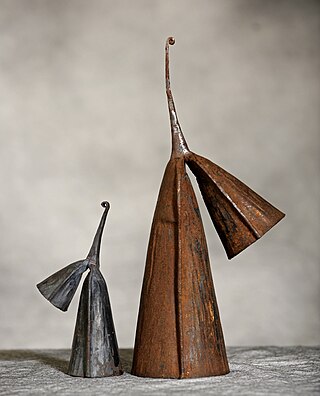
A bell pattern is a rhythmic pattern of striking a hand-held bell or other instrument of the idiophone family, to make it emit a sound at desired intervals. It is often a key pattern, in most cases it is a metal bell, such as an agogô, gankoqui, or cowbell, or a hollowed piece of wood, or wooden claves. In band music, bell patterns are also played on the metal shell of the timbales, and drum kit cymbals.
In music, a cross-beat or cross-rhythm is a specific form of polyrhythm. The term cross rhythm was introduced in 1934 by the musicologist Arthur Morris Jones (1889–1980). It refers to a situation where the rhythmic conflict found in polyrhythms is the basis of an entire musical piece.

Sub-Saharan African music is characterised by a "strong rhythmic interest" that exhibits common characteristics in all regions of this vast territory, so that Arthur Morris Jones (1889–1980) has described the many local approaches as constituting one main system. C. K. Ladzekpo also affirms the profound homogeneity of approach. West African rhythmic techniques carried over the Atlantic were fundamental ingredients in various musical styles of the Americas: samba, forró, maracatu and coco in Brazil, Afro-Cuban music and Afro-American musical genres such as blues, jazz, rhythm & blues, funk, soul, reggae, hip hop, and rock and roll were thereby of immense importance in 20th century popular music. The drum is renowned throughout Africa.
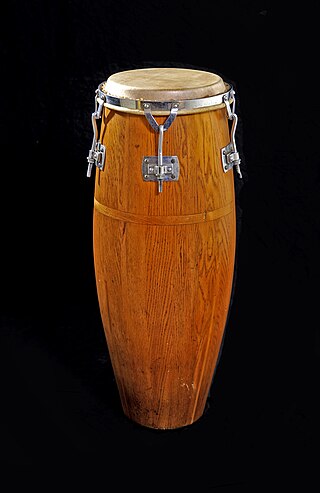
The quinto is the smallest and highest pitched type of conga drum. It is used as the lead drum in Cuban rumba styles such as guaguancó, yambú, columbia and guarapachangueo, and it is also present in congas de comparsa. Quinto phrases are played in both triple-pulse and duple-pulse structures. In columbia, triple pulse is the primary structure and duple pulse is secondary. In yambú and guaguancó duple-pulse is primary and triple-pulse is secondary.









